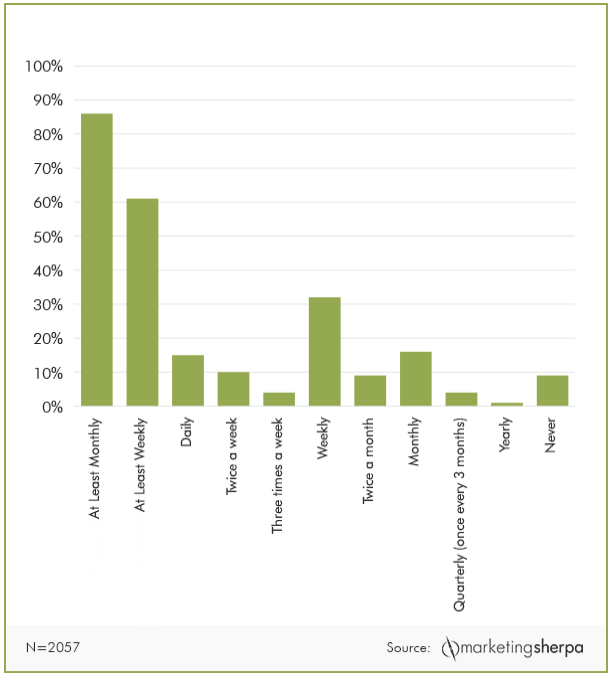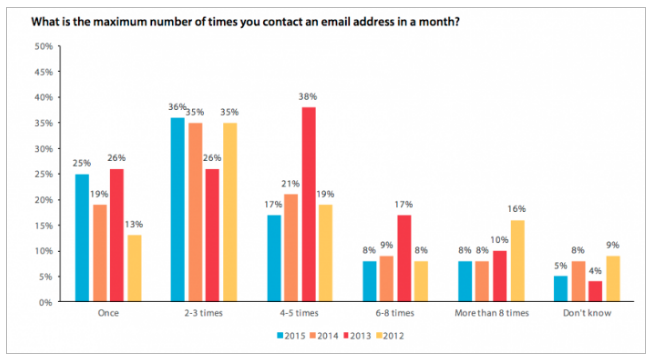This is THE question that everyone asks us and unfortunately, the answer to this question varies for each company. I would go even further by saying that even the experts do not agree on the correct way to properly answer to this question.
We want to reassure you that there are ways to find the answer to that question for your business.
Let’s begin with some statistics. According to a Marketing Sherpa survey, in which they surveyed 2,057 American adults how often they wanted to receive promotional emails (coupons, sales, etc.) with which they did business, the findings stated that:
- 91% wanted to receive promotional e-mails
- 86% wanted to receive them at least once a month
- 61% wanted to receive them once a week
- and 15% wanted to receive them daily

Another study by the DMA’s National Email Client Report surveyed its members to find out how often they send their emails. Here are some figures from 2015:
- 25% send one email per month
- 36% send 2 to 3 emails per month
- 17% send 4 to 5 emails per month

What can we conclude from these findings? First, your contacts should want to receive your emails. Secondly, one email per month should be your bare minimum frequency, especially if you send out a newsletter.
Depending on your industry, your objectives, or the frequency at which you have indicated to your contacts that you will send your emails, it is advisable to increase the frequency of your mailings.
If you are doing automated marketing, it is imperative to have a more sustained emailing rhythm. For example, when a person subscribes to your newsletter, you can send him a series of emails to let him know about your existing content, etc.
Sending too few emails: The Risks
Not sending enough emails can hurt you.
- Missed opportunities to sell. More emails equals more money. It’s important to maximize the impact of your email marketing.
- Your contacts may forget you. Most of your contacts had a reason to sign up to receive your emails. If they do not receive your emails on a regular basis, they will no longer think about you.
- You reduce your brand visibility to these contacts. Whenever a person receives one of your emails, you expose them to your brand, even if your emails are not opened.
Sending too many emails: The Risks
On the other hand, sending too many emails can hurt you as well.
- Your contacts will eventually get sick of receiving your emails and will stop opening them.
- Your contacts will unsubscribe to stop receiving your emails. Once unsubscribed, you can no longer legally communicate with them.
- You will harm your reputation and branding. Your contacts will eventually complain to their friends and contacts and may even mention them on social media networks.
How to test your frequency
There are two simple ways to know what your ideal sending frequency is:
- Create different test groups and send your emails at different frequencies. Subsequently, analyze which frequency generates the best opening and click rates as well as the smallest churn rates.
- Survey your contacts. Send them a poll asking how often they want to receive your communications. It’s simple and it works.
Once you have discovered the best frequency for your business, tell subscribers in the future that you will send them an email at this frequency rate. That way, they will know what to expect from you.
What is more important than the frequency at which you send your emails is the relevance of these emails. If your emails are relevant to your contacts, they will be happy to receive them frequently. On the other hand, if your email has no added value for your contacts, no matter how often they are sent they will not be welcome additions in their inboxes.
If you are not already a customer of Cyberimpact, we invite you to create your free account.
